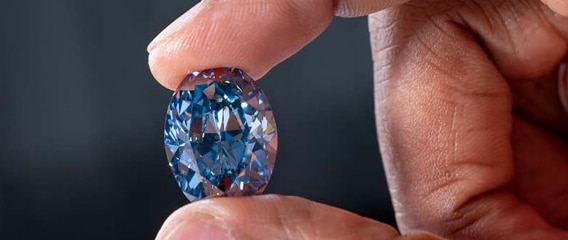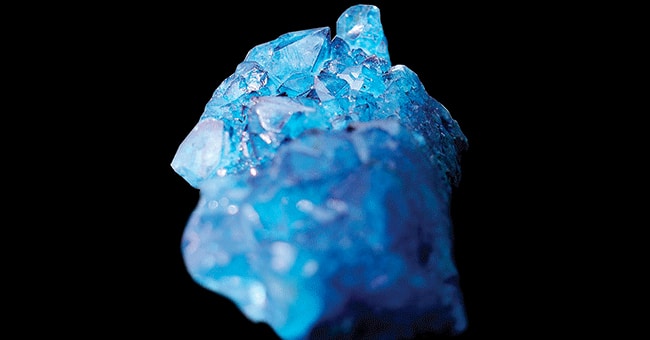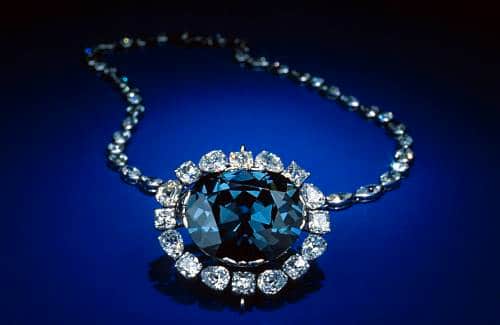Blog
Home » Diamonds blog » BOTSWANA REVEALS STONE THAT IT BELIEVES WILL RIVAL THE FAMED HOPE DIAMOND
Focus on

The diamond was cut from a 41.11-carat piece of rough, discovered in May 2018 at Orapa, a giant open-pit facility operated by Debswana, which is the world’s largest diamond-mining facility by area. Debswana is a Botswana’s largest diamond-mining company and is jointly owned by De Beers and the government of Botswana. With about 15 percent share, Botswana itself is the second largest shareholder in De Beers.
The Okavango Blue is being sold by the sold by the Okavango Diamond Company (ODC), which is wholly owned by the Botswana Government. With access to 15 percent of Debswana’s run-of-mine production, ODC is an important supplier to the market with sales in the region of $500 million per annum.
BETTER clarity BIT NOT AS LARGE AS THE HOPE
The Okavango Blue is less than half the size of the Hope, but its owners are claiming that its clarity grade by the Gemological Institute of America (as “Very, Very Slightly Included,” or VVS2, will elevate it above its more famous rival, which has a “Very Slightly Included,” or VS1 grade, according to the Smithsonian Institution in Washington. DC, where it resides.
“It is incredibly unusual for a stone of this color and nature to have come from Botswana, said Marcus ter Haar, managing director of Okavango Diamond Company, in a statement. “a once-in-lifetime find, which is about as rare as a star in the Milky Way.”
“It is little surprise blue diamonds are so sought after around the world as only a very small percentage of the world’s diamonds are classified as fancy color and, of those, only a select few can be classified as being Fancy Blue,” he added. “Only a handful of similar blue stones have come to market during the last decade, of which the Okavango Blue rightfully takes its place as one of the most significant.”
LEGACY ADDs TO HOPE’S SPECIAL ALLURE
Both the Okavango Blue and the Hope Diamond owe their special hue to the presence of boron molecules in their crystal lattice. But where previous studies of blue diamonds reported levels of boron of less than one in a million, in parts of the Hope Diamond, boron levels were as high as eight per million atoms.

The 20.46-carat oval-shaped Okavango Blue, described by its owner as ‘a once-in-lifetime find, which is about as rare as a star in the Milky Way.’

The 41.11-carat stone from which the Okavango Blue was cut, discovered in May 2018 at Orapa mine in Botswana.

The most famous blue diamond of them all, The Hope Diamond, which can be viewed today at the Smithsonian’s National Museum of Natural History in Washington D.C.
But it is not only color that has provided the Hope with its special allure. It is also the stone’s legacy. Mined in India, it was bought by the Renaissance French Traveler Jean-Baptiste as a 118-carat rough blue diamond. He subsequently sold to King Louis XIV of France in 1668, who described it as a “beautiful violet.”
Stolen in 1791, it reappeared in 1939 after being recut in the catalog of a gem collection owned by a london banking family called Hope, from which it got its name. It then changed hands several times, until it was purchased in 1949 by New York gem merchant Harry Winston.
Winston donated it to the Smithsonian’s National Museum of Natural History, where it became the centerpiece of the institution’s renowned gemstone collection.
Famously, to get the diamond from New York to Washington, DC. an employee of Harry Winston mailed an ordinary looking package at the mail city post office. The employee paid $145.29 to mail the package, with postage accounted for only $2.44 of the total cost, and the rest for insurance premium totaling $1 million.
The Hope is said to be cursed, although there are those who claim it was a myth dreamed up by insurance agents, designed to scare away would-be thieves. Nonetheless, it has been confirmed that the postman who delivered the box containing the famous diamond to the Smithsonian later experienced a series of calamities in short succession. His leg was crushed and suffered a head wound in two separate automobile accidents, his wife died of a heart attack, his home in Maryland was partially destroyed by fire and his dog strangled on its leash.
For the record, the postman dismissed all talk of a curse and attributed what to had happened to simply a run of bad luck.
